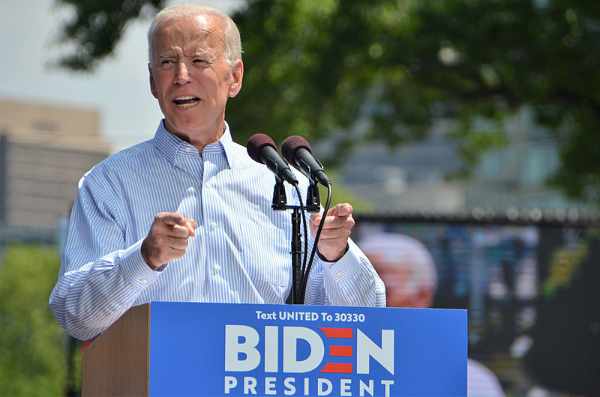



by David Reavill
Biden: I guarantee you we’re going to end fossil fuels.
Just kidding. Of course, the CPI stands for the Consumer Price Index, the most widely followed measure of inflation. But the correlation between the price of oil and inflation is remarkable. Wall Street has seen this relationship between energy and inflation for years. In yesterday’s CPI report, most analysts were either right on the money or very close in their estimate for inflation. All of the predictions I’ve seen got the direction of inflation correct, headed lower, if not the exact level; inflation came in at 4%, down from 4.9% the month before.
While it’s true that all of these analysts are talented and utilize the very best computer-generated models, it took only some of that technology to realize that the price of energy has been declining. As day followed night, lower energy costs translated into lower inflation.
I’ve included a chart that demonstrates just how in step these two measures have been over the last ten years. From 2015 until the Pandemic in 2020, both the price of oil and inflation were relatively benign. You may recall that the Federal Reserve was bemoaning the low level (if you can believe it) of inflation. The Fed wanted inflation to be higher, which was one of the reasons for the very low-interest rate policy.
 Then came the Covid-19 Pandemic, and economic activity in the country ground to a halt. Prices dropped into negative territory, as did the price of oil. The country was trapped in deflation. Fortunately, that situation did not last long; however, as you can see on the chart, in its place, prices quickly headed from deflation to inflation. The oil price and inflation peaked precisely one year ago, in June 2022. Oil, or more broadly, energy cost, had driven inflation higher.
Then came the Covid-19 Pandemic, and economic activity in the country ground to a halt. Prices dropped into negative territory, as did the price of oil. The country was trapped in deflation. Fortunately, that situation did not last long; however, as you can see on the chart, in its place, prices quickly headed from deflation to inflation. The oil price and inflation peaked precisely one year ago, in June 2022. Oil, or more broadly, energy cost, had driven inflation higher.
So yesterday, the nation cheered as inflation came down once again. But we would do well to review just how this has happened because without understanding how we got to this point, it may lead us to get back to another “high inflation event.” This current bout with inflation is a fascinating story with much less to do with economics, or the latest Fed monetary policy (higher interest rates), than with good old-fashioned politics.
Our story began in the Presidential Campaign of 2020. The Campaign pitted the incumbent Donald Trump against Joe Biden, a well-known figure in Washington having recently been the Vice President for Barack Obama. The two candidates held views on oil and gas that were almost the polar opposite of one another. While Trump had opened up exploration and production of oil as a priority of his Administration, Biden was set against increasing any additional production of fossil fuels. In one theatrical exchange with an audience member, Biden exclaimed: “I guarantee you we’re going to end fossil fuels.”
True to his words, after his election to the Presidency, Biden did indeed begin shutting down the nation’s use of oil and gas, canceling the Keystone XL Pipeline, and a host of leases on federal lands.
Next came the War in Ukraine, where Biden’s moved to cut off all imported oil from Russia. It represented nearly 10% of the country’s energy usage at the time.
Those were two critical steps that shut down oil and gas supplies. The oil markets were acutely aware of Biden’s position on energy. They rallied from just over $52/ barrel for West Texas Intermediate, the nation’s premier oil, on the day Biden was inaugurated to $114/barrel when oil and inflation peaked a year ago. Since then, declining economic activity has helped slow inflation and oil prices.
Additionally, the Biden administration has used the controversial strategy of selling oil out of the Nation’s Strategic Petroleum Reserve (SPR). While this did help lower oil prices by increasing the amount of crude (supply) on the market. It also brought the quantity of oil in the SPR down to levels last seen in the 1980s. Making us more vulnerable to any potential “oil shock.”
And just like that, around the corner, Saudi Arabia announced that they are reducing the amount of oil they will sell. Suddenly it’s 1973 all over again. You see, OPEC severely reduced the amount of oil they would sell to the US back then. It created shortages throughout the country and began the first bout of oil-based inflation. The Federal Government created the Strategic Petroleum Reserve so that if any supplier cut us off as OPEC did, we would have an oil reserve to fall back on. Biden has just lowered our backup to dangerous levels while the Saudis are reducing sales. Deja vu, anyone?
I believe that Baseball’s most spectacular combination is the “Double Play.” In this wonderfully complex maneuver, which can take several forms, the Shortstop often begins by fielding the ball, tossing it to the second baseman for the first out, and then on to first base for the second out. It’s a whirling bit of motion and change of direction. And after cheering for that final out at first base, you often forget who began it all.
Inflation is like that. It’s been a constantly moving, overwhelmingly complicated event. And like Baseball, it’s an emotional roller coaster as these higher prices eat at our wallets. But like the “double play” that began with the Shortstop, misguided energy policies have been the cause of these higher prices. And if Saudi Arabia is a precursor, we may see higher energy prices and higher inflation again.
